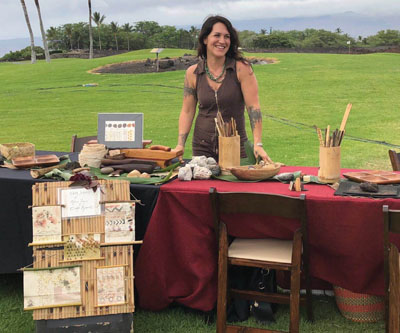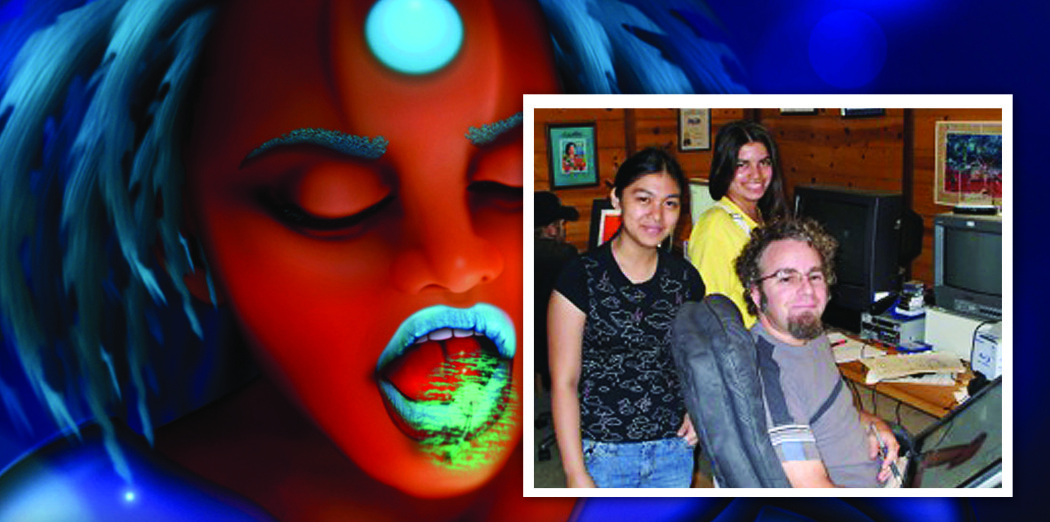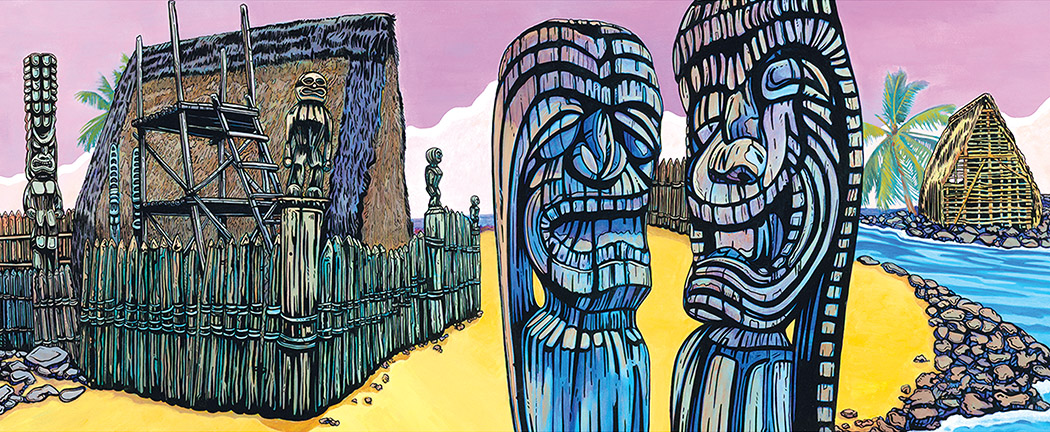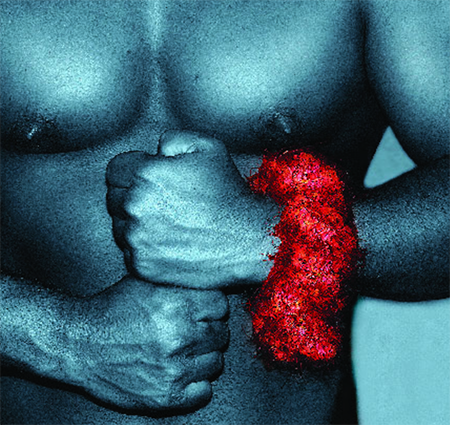
Portraits of a Culture: The Photographic Artistry of G.P. Merfeld
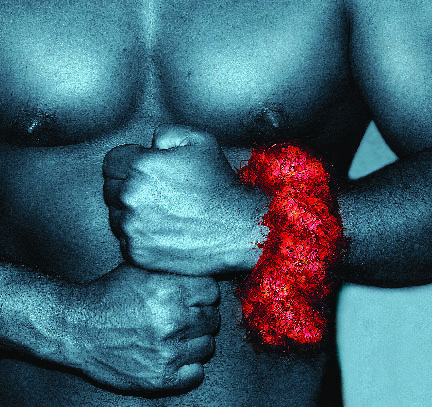 By Karen Valentine with G.P. Merfeld
By Karen Valentine with G.P. Merfeld
Chances are, if you are a hula dancer performing at a local festival, a musician strumming at an outdoor concert, a proud member of the Royal Court, or a paddler in the Lili’uokalani Outrigger Canoe Races, then you may have noticed a man with a mustache wandering about the event, wearing a bandana, and holding a long-lensed camera, pointed your way.
With an eye for capturing the spirit of the dancer and the passion of the dance, the camera of G.P. Merfeld records mostly candid images that result in fine art available in galleries and homes in West Hawai‘i and Honolulu, as well as on the artist’s website, gpmkona.com. As an artist photographer, G.P. has dedicated himself to preserving and sharing “all things uniquely Hawaiian” through an artistic project called “Island Preservations.”
The prolific photographer has also provided imagery for a variety of professional clients, including the Hawaiian Airlines 2008 Hula Calendar, Bishop Museum, and Hokuli‘a Resorts. As a young man, Merfeld traveled around the world on his own, visiting more than 21 countries, and exploring various cultures on a journey of self-education. Today he says he still loves to travel, and makes regular trips to the mainland and beyond, where he shoots various “urban tribes” using his candid approach wherever he goes. “But Hawai‘i is and always will be my home, where the Aloha Spirit never ceases to fill my heart and renew my soul.”
A Kona resident for more than 25 years, Merfeld formerly worked with a technique for preserving Hawaiian lei and orchids with a unique method of dehydration that retains all of the color and three dimensional form of the flowers. For 15 years, he exhibited these floral treasures in museums and resorts, and had a small gallery of his own in Kailua-Kona.
Since the process required the use of health-threatening chemicals, however, Merfeld decided to discontinue the work as he said it would have required the construction of a costly scientific laboratory. So he put the project on the back burner until he could “someday retire as a wealthy man and resume the research as it should be done.”
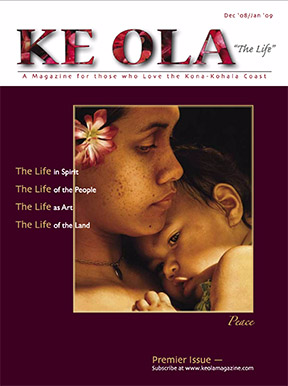
Merfeld didn’t forget his love for flowers as an artistic subject, nor his dedication to preserving island culture. But he found a healthier medium while rekindling his first artistic love from his teenage years, and that was photography.
“The advent of digital imaging re-opened the photographic world to me, allowing me to shoot to my heart’s content, and to process my images in the digital darkroom of the computer here in my humble ‘jungle’ abode in Opihihale,” he said.
Merfeld has not looked back since, and prides himself on his distinctive style of imagery and his hands-on approach to fine art processing from start to finish. “Perhaps it is a carry-over from the film and darkroom days, but I prefer to have complete control of the process myself, from initial shoot to final print. And in the process, it seems that I have developed a signature style of toning that is becoming recognizable in a lot of my work.”
Regarding his shooting technique, Merfeld says, “The majority of my work is candid portraiture while shooting at the local events and on the street. People know that I am there with a camera and just get used to me being around. I do not direct people verbally or pose them for pictures. I am trying to capture the character, the culture, the soul of a hula dancer performing, a paddler on the ocean, or a paniolo on horseback.”
Merfeld’s cultural portraits extend beyond the faces of the kama‘aina to include any and all details of the uniquely Hawaiian lifestyle, which he refers to as the “only in Hawai‘i kine stuff.” Not surprisingly, considering his past experience, one of his most popular series of images is an ongoing project called “The Lei Series,” which includes vibrant studies of Hawaiian lei on Hawaiian torsos, combining color and monotone elements in each image for a uniquely artistic vision. Also popular is “Jungle Cars,” an ever-growing collection of a familiar site to kama‘aina—those cars and trucks that are abandoned, only to let Mother Nature “reclaim them as her personal planters, while the jungle takes over and turns them into living sculptures.” And then there are the animals of the islands: A green-eyed cat lounging under tropical leaves, a giant Honu on a secluded beach, a rooster proudly held by a local farmer.
Merfeld reflects, “Living in Hawai‘i for almost half my life has been the most special journey of all, and I am honored and humbled to partake of the immense beauty of the land and it’s people on a daily basis. I feel that it is my privilege and my obligation to share with the world the rich and endangered culture of these islands I call home. My mission is to photographically honor and preserve the Tribal Heart, Island Life, and Aloha Spirit that is Hawai‘i.” ❖
Merfeld’s work can be seen at The Gallery at Hilton Waikoloa, Showcase Galleries in Keauhou and Kainaliu, Nohea Galleries on O’ahu, and at his website.
